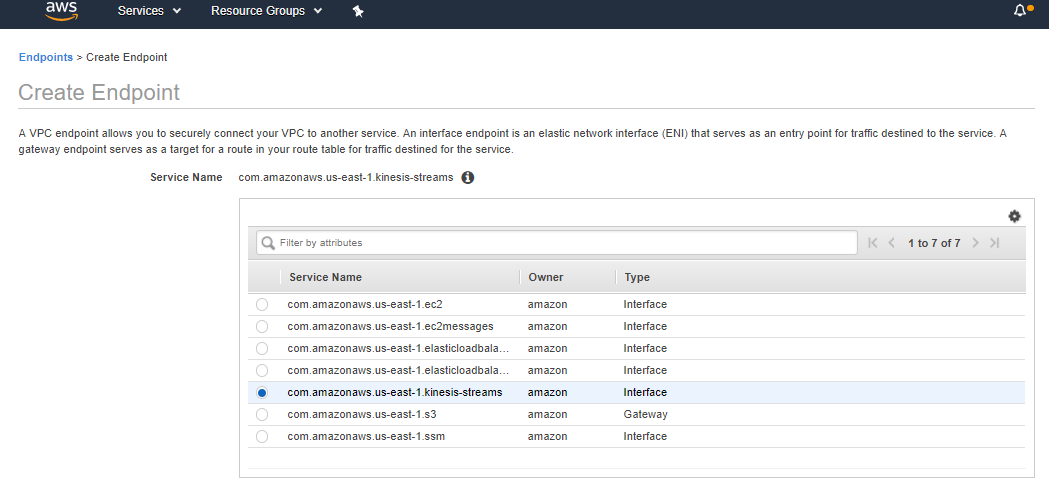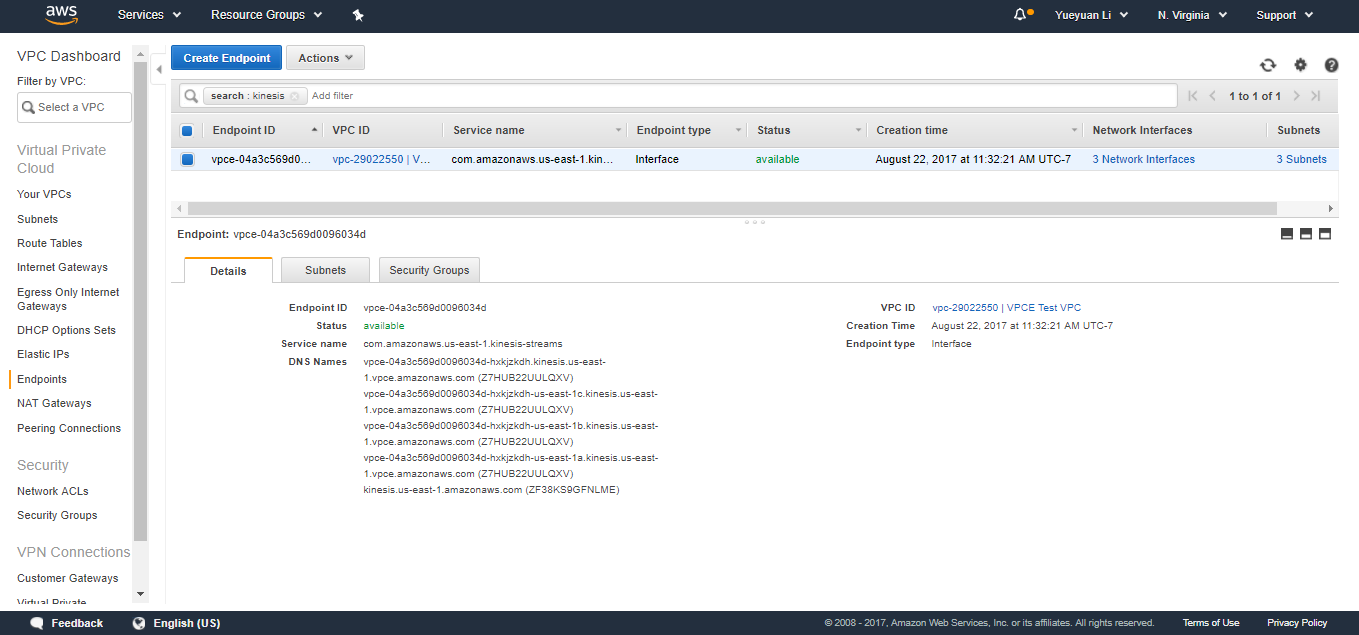AWS News Blog
New – AWS PrivateLink for AWS Services: Kinesis, Service Catalog, EC2 Systems Manager, Amazon EC2 APIs, and ELB APIs in your VPC
This guest post is by Colm MacCárthaigh, Senior Engineer for Amazon Virtual Private Cloud.
Since VPC Endpoints launched in 2015, creating Endpoints has been a popular way to securely access S3 and DynamoDB from an Amazon Virtual Private Cloud (VPC) without the need for an Internet gateway, a NAT gateway, or firewall proxies. With VPC Endpoints, the routing between the VPC and the AWS service is handled by the AWS network, and IAM policies can be used to control access to service resources.
Today we are announcing AWS PrivateLink, the newest generation of VPC Endpoints which is designed for customers to access AWS services in a highly available and scalable manner, while keeping all the traffic within the AWS network. Kinesis, Service Catalog, Amazon EC2, EC2 Systems Manager (SSM), and Elastic Load Balancing (ELB) APIs are now available to use inside your VPC, with support for more services coming soon such as Key Management Service (KMS) and Amazon Cloudwatch.
With traditional endpoints, it’s very much like connecting a virtual cable between your VPC and the AWS service. Connectivity to the AWS service does not require an Internet or NAT gateway, but the endpoint remains outside of your VPC. With PrivateLink, endpoints are instead created directly inside of your VPC, using Elastic Network Interfaces (ENIs) and IP addresses in your VPC’s subnets. The service is now in your VPC, enabling connectivity to AWS services via private IP addresses. That means that VPC Security Groups can be used to manage access to the endpoints and that PrivateLink endpoints can also be accessed from your premises via AWS Direct Connect.
Using the services powered by PrivateLink, customers can now manage fleets of instances, create and manage catalogs of IT services as well as store and process data, all without using public IP addresses.
Creating a PrivateLink Endpoint
To create a PrivateLink endpoint, I navigate to the VPC Console, select Endpoints, and choose Create Endpoint.
I then choose which service I’d like to access. New PrivateLink endpoints have an “interface” type. In this case I’d like to use the Kinesis service directly from my VPC and I choose the kinesis-streams service.
At this point I can choose which of my VPCs I’d like to launch my new endpoint in, and select the subnets that the ENIs and IP addresses will be placed in. I can also associate the endpoint with a new or existing Security Group, allowing me to control which of my instances can access the Endpoint.
Because PrivateLink endpoints will use IP addresses from my VPC, I have the option to over-ride DNS for the AWS service DNS name by using VPC Private DNS. By leaving Enable Private DNS Name checked, lookups from within my VPC for “kinesis.us-east-1.amazonaws.com” will resolve to the IP addresses for the endpoint that I’m creating. This makes the transition to the endpoint seamless without requiring any changes to my applications. If I’d prefer to test or configure the endpoint before handling traffic by default, I can leave this disabled and then change it at any time by editing the endpoint.
Once I’m ready and happy with the VPC, subnets and DNS settings, I click Create Endpoint to complete the process.
Using a PrivateLink Endpoint
By default, with the Private DNS Name enabled, using a PrivateLink endpoint is as straight-forward as using the SDK, AWS CLI or other software that accesses the service API from within your VPC. There’s no need to change any code or configurations.
To support testing and advanced configurations, every endpoint also gets a set of DNS names that are unique and dedicated to your endpoint. There’s a primary name for the endpoint and zonal names.
The primary name is particularly useful for accessing your endpoint via Direct Connect, without having to use any DNS over-rides on-premises. Naturally, the primary name can also be used inside of your VPC.
The primary name, and the main service name – since I chose to over-ride it – include zonal fault-tolerance and will balance traffic between the Availability Zones. If I had an architecture that uses zonal isolation techniques, either for fault containment and compartmentalization, low latency, or for minimizing regional data transfer I could also use the zonal names to explicitly control whether my traffic flows between or stays within zones.
Pricing & Availability
AWS PrivateLink is available today in all AWS commercial regions except China (Beijing). For the region availability of individual services, please check our documentation.
Pricing starts at $0.01 / hour plus a data processing charge at $0.01 / GB. Data transferred between availability zones, or between your Endpoint and your premises via Direct Connect will also incur the usual EC2 Regional and Direct Connect data transfer charges. For more information, see VPC Pricing.


